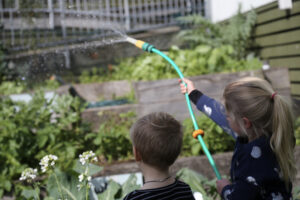Miley Harris uses the story of Pete the Cat to teach her Year 2 class about resilience. Matiu Cross uses learning buddies to tutor other Year 5 students on how to find lines of symmetry in an object.
The reason both strategies are effective is because they rely on the social encoding advantage.
When children read about Pete the Cat (or watch the funky Youtube videos) they relate to Pete as a character with attributes and characteristics. That’s far more interesting to the brain and far more memorable than a book or video on the concept of resilience.
When the tutors in Matiu’s class are learning about lines of symmetry and know they’ll help their buddies with it, they are far more invested in the learning, and it becomes embedded more deeply in their brains.
The fascinating thing about the social encoding advantage is that it uses an entirely different memory system than the one we use to memorise information traditionally.
Jason Mitchell, social neuroscientist at Harvard found that the mentalizing system is active when the social encoding advantage applies. That’s the system that enables us to see the world through someone else’s eyes. It’s the one that tells us that our partner is going to be upset when they come home from a weekend away and find the place is an absolute mess.
Under certain circumstances the mentalizing system is more powerful than trying to memorise.
Numerous studies have compared groups who were asked to look at statements describing ordinary behaviours.
Reading the newspaper
Riding a bike
Patting a dog
Washing a car
Eating an apple
Kicking a ball
Grooming a horse
Writing a note
Watering the garden
Checking the mailbox
One group was asked to memorize the statements for a test. The other group was asked to ‘form an overall impression of what the person who performed the various actions is like’ and are explicitly told not to try to memorize the information. They are instructed that they’ll be asked some questions later based on the impression they had formed.
In reality they were both given a memory test based on the list (social scientists are sneaky like that).
In study after study, those that were thinking about the attributes of the people remembered the material better than those actually trying to memorize it.
How does this apply to our classrooms and in our schools?
In many cases we’re doing it already. We’re asking children to work in groups, to work co-operatively to research and develop solutions to problems. We’re looking at real problems that impact real people in their own environment. We’re telling stories and we’re creating our own stories around what we can do now and what we can accomplish in the future.
Activities like this are also building communication and self-management skills alongside the skills we need to work in teams, to co-operate and co-ordinate together.
In the coming decades Artificial Intelligence is going to take over many of the data and information-based tasks that we do now, our children are increasingly going to need those human skills. Those are the skills that we need to be teaching and we need to be teaching them in a human-focussed way.
Reference Social – Why our brains are wired to connect by Matthew D Lieberman
.